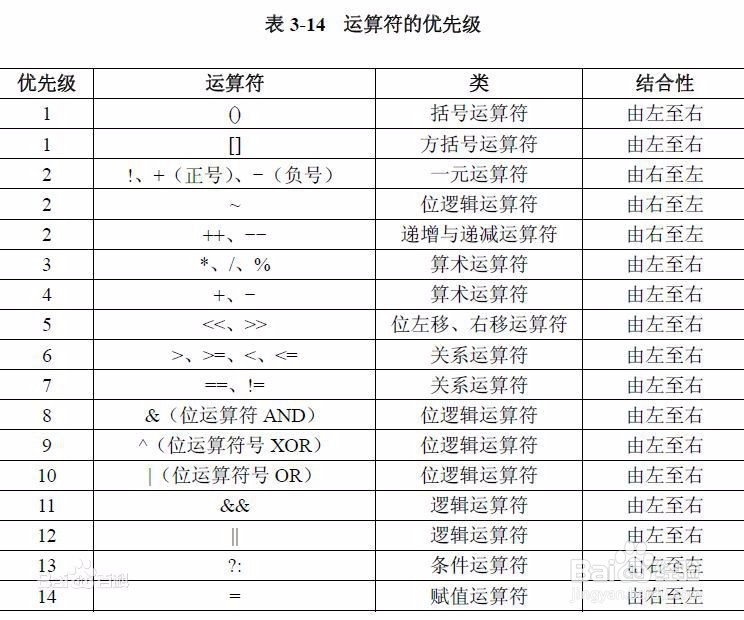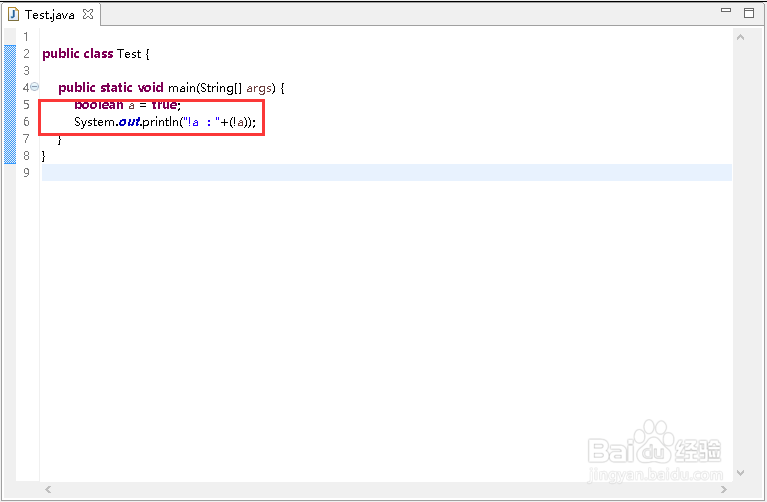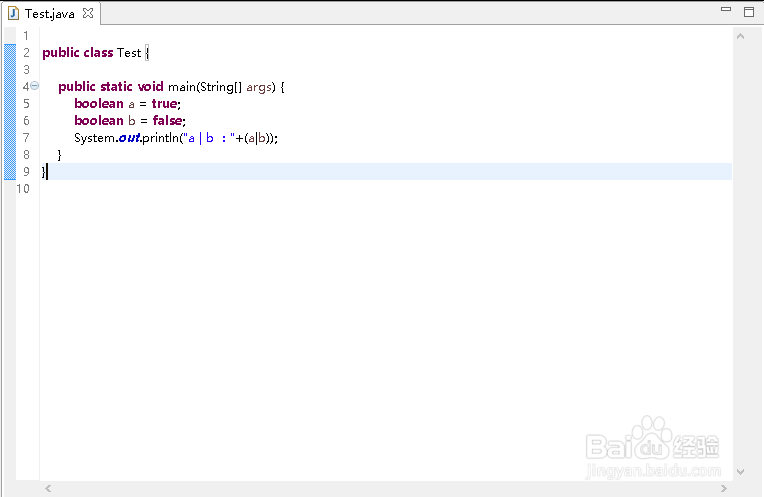Java逻辑运算符如何运用
1、赋值运算符是为变量指定具体值的符号,顺序是从左到右。

2、下面说明短路与“&&”的运用
首先我们输入以下代码:
public class Test {
public static void main(String[] args) {
boolean a = true;
boolean b = false;
System.out.println("a && b:"+(a&&b));
}
}
会看到输出结果:a && b:false

3、下面说明短路或“||”的运用
首先我们输入以下代码:
public class Test {
public static void main(String[] args) {
boolean a = true;
boolean b = false;
System.out.println("a || b:"+(a||b));
}
}
会看到输出结果:a || b:true

4、下面说明非“!”的运用
首先我们输入以下代码:
public class Test {
public static void main(String[] args) {
boolean a = true;
System.out.println("!a :"+(!a));
}
}
会看到输出结果:!a :false

5、下面说明或“&”的运用
首先我们输入以下代码:
public class Test {
public static void main(String[] args) {
boolean a = true;
boolean b = false;
System.out.println("a & b :"+(a&b));
}
}
会看到输出结果:a & b :false

6、下面说明或“|”的运用
首先我们输入以下代码:
public class Test {
public static void main(String[] args) {
boolean a = true;
boolean b = false;
System.out.println("a | b :"+(a|b));
}
}
会看到输出结果:a | b :true

7、下面说明异或“^”的运用
首先我们输入以下代码:
public class Test {
public static void main(String[] args) {
boolean a = true;
boolean b = false;
System.out.println("a ^ b :"+(a^b));
}
}
会看到输出结果:a ^ b :true
